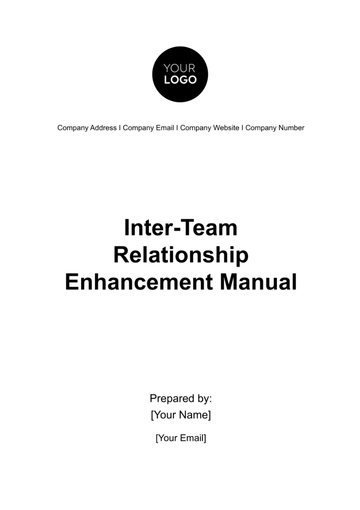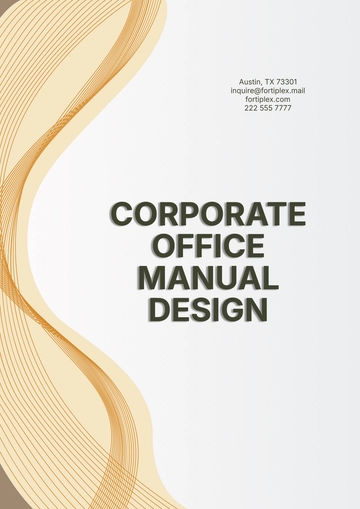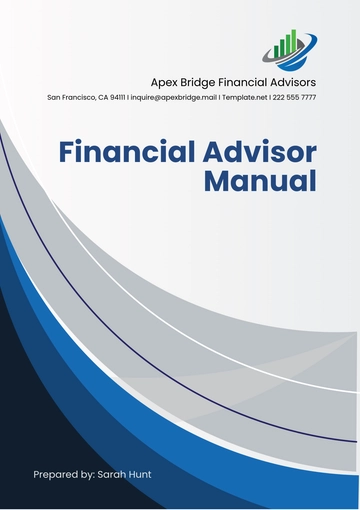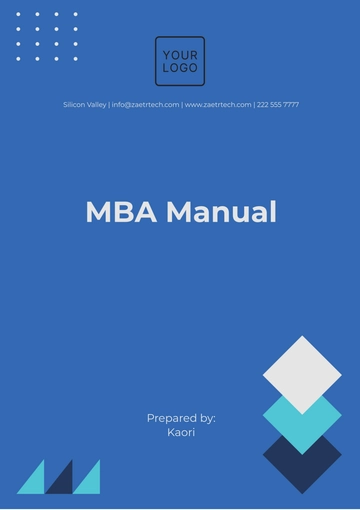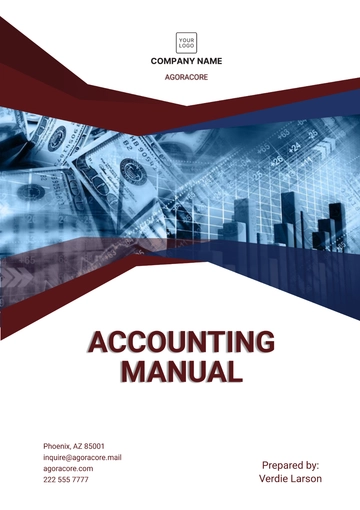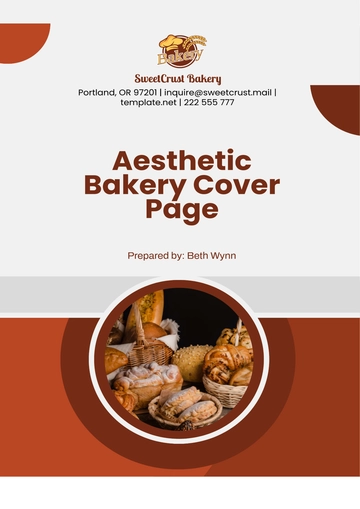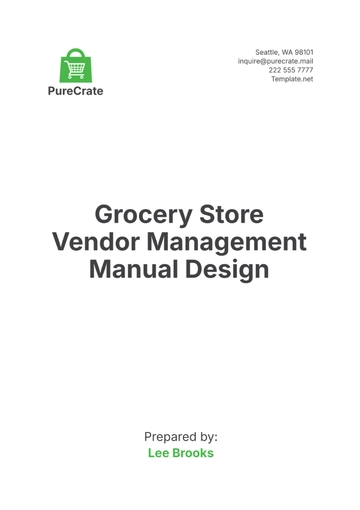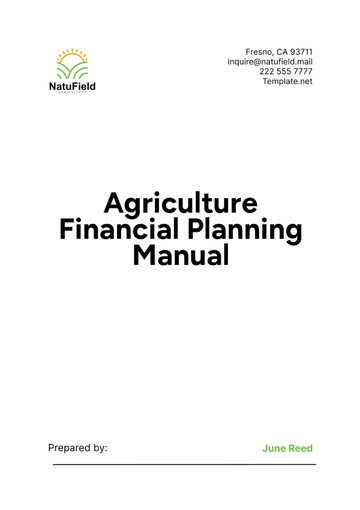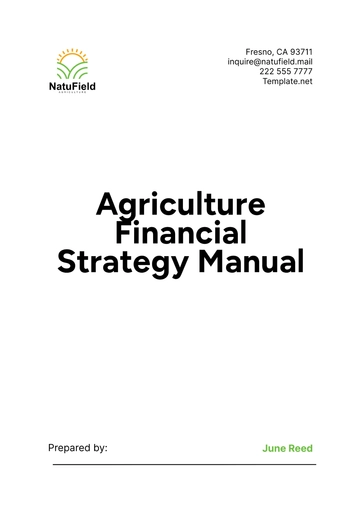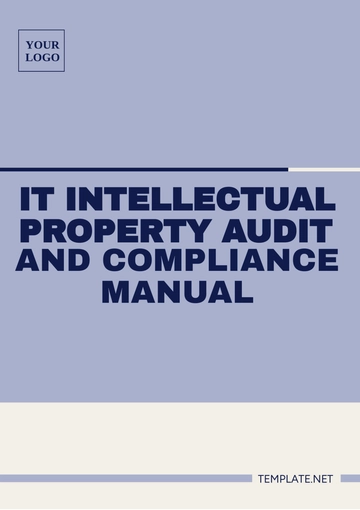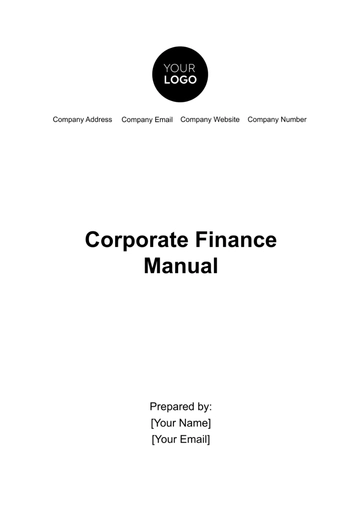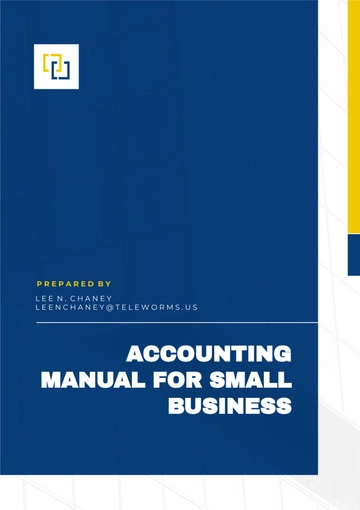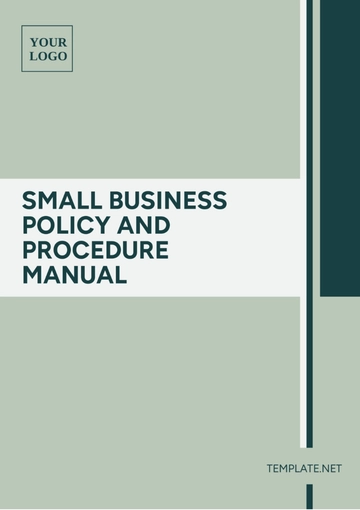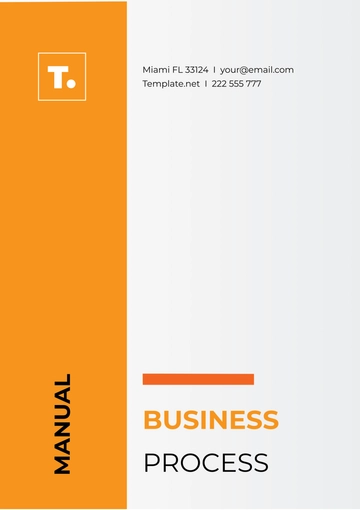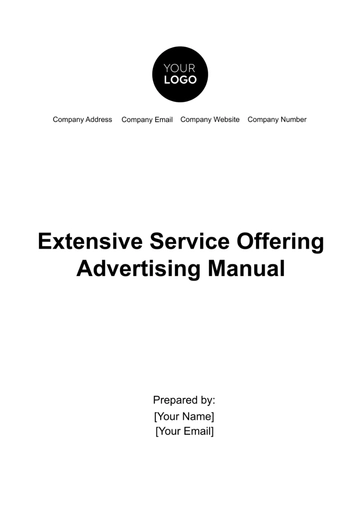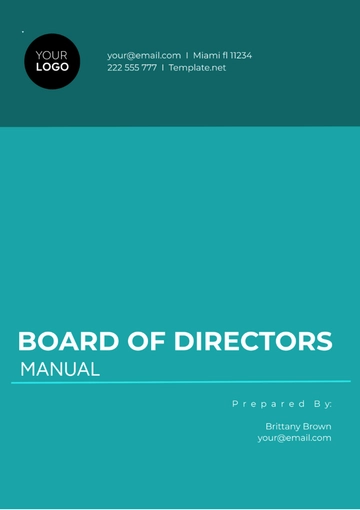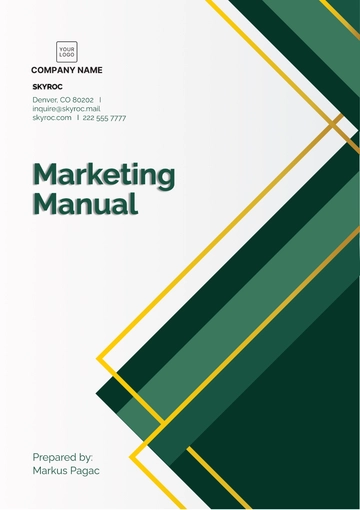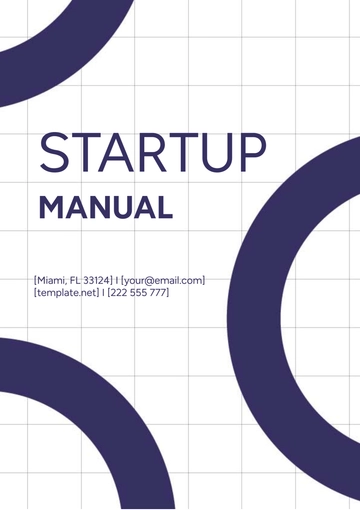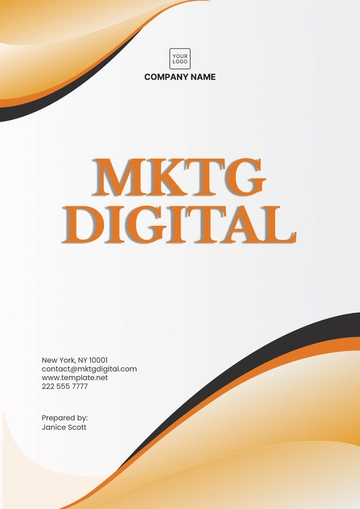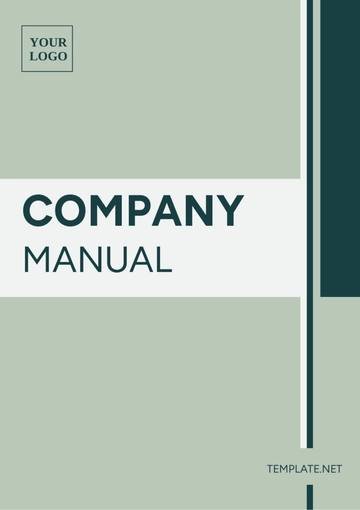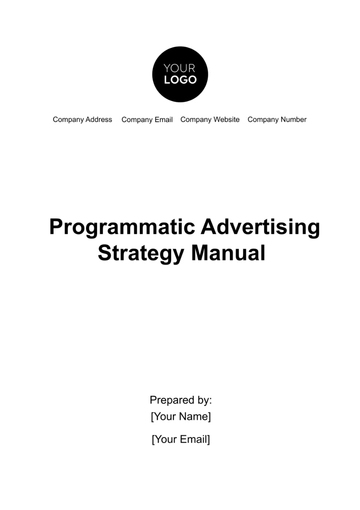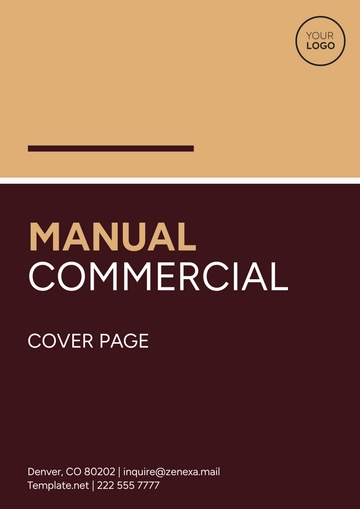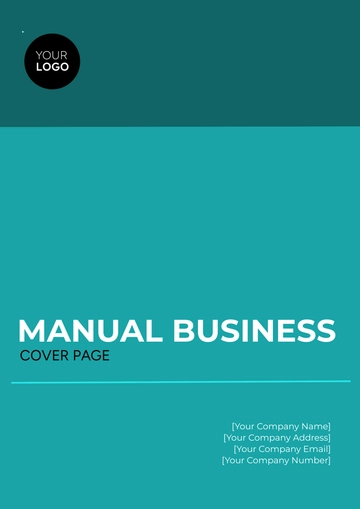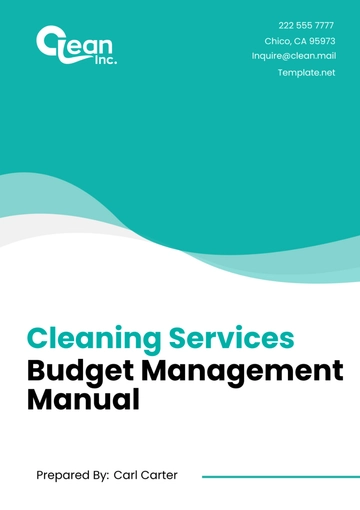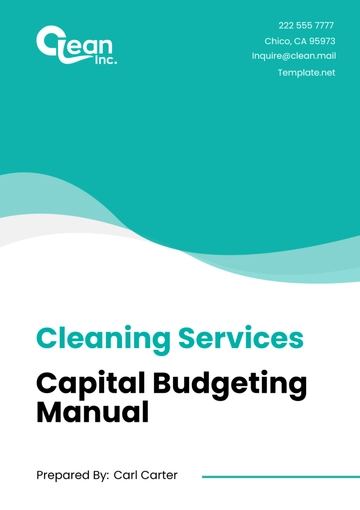Free Bakery Management Manual
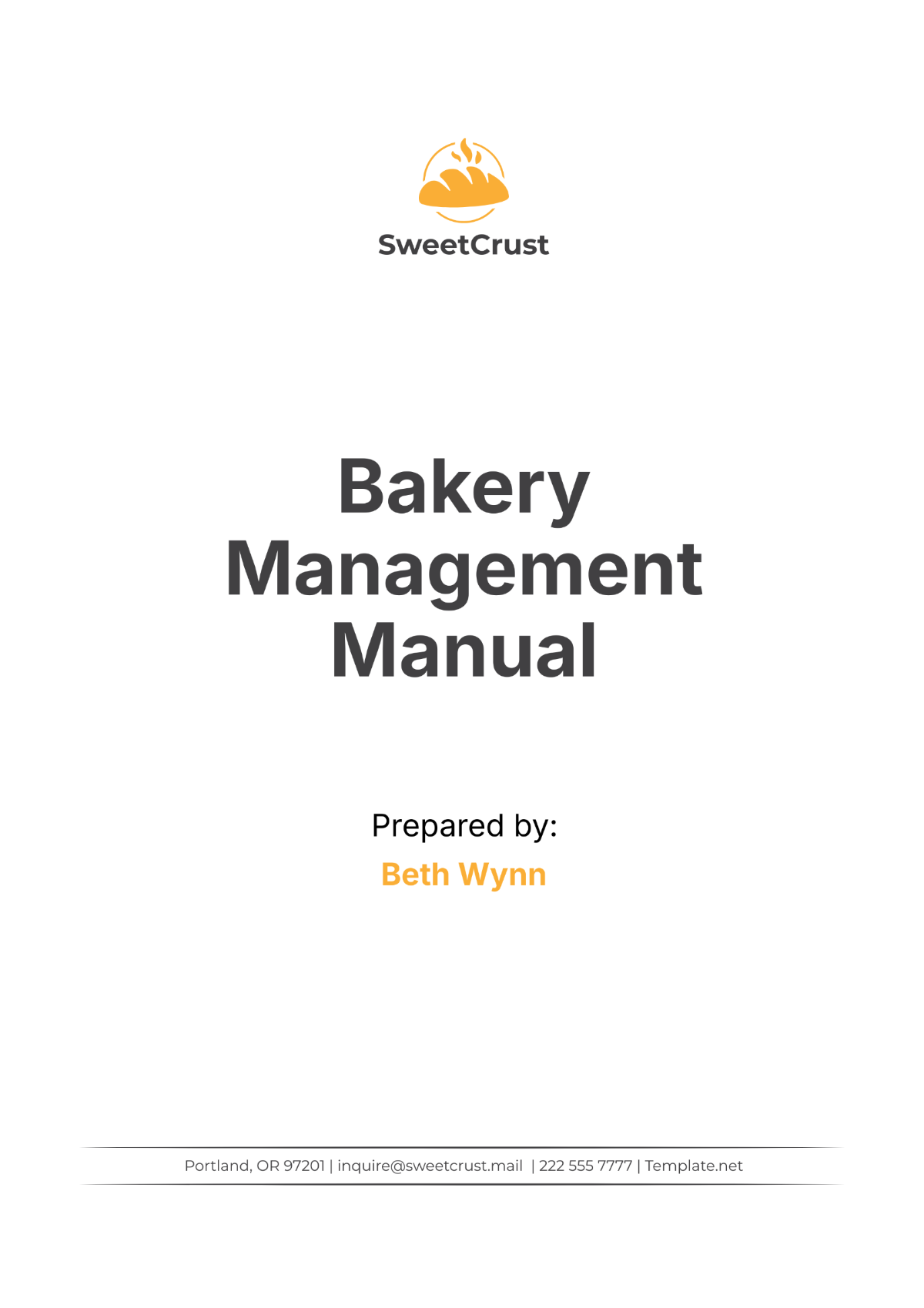
I. Introduction
Welcome to the Bakery Management Manual for [Your Company Name]. This manual is designed to provide a comprehensive guide to the operations, policies, and procedures that ensure the efficient and compliant running of our bakery. At [Your Company Name], we are dedicated to maintaining the highest standards of quality and service while adhering to industry regulations and best practices. This document will serve as an essential resource for both new and current employees, offering detailed instructions on various aspects of bakery management, from daily operations to employee conduct.
Our bakery prides itself on delivering exceptional products and a positive customer experience. This manual outlines our commitment to food safety, customer service, and operational excellence. By following the guidelines set forth, employees will be equipped to contribute effectively to our mission, ensuring that [Your Company Name] remains a trusted and cherished destination for bakery lovers. We encourage all staff members to familiarize themselves with this manual and apply its principles to support our ongoing success and growth.
II. Store Operations
Efficient store operations are crucial for the smooth running of [Your Company Name]. This section outlines the key procedures for opening and closing the bakery, as well as daily operational tasks. Adhering to these procedures ensures that our bakery operates seamlessly, maintains high standards of cleanliness and product quality, and provides excellent service to our customers.
Here are the necessary steps for opening and closing the store, as well as daily operational activities.
A. Opening Procedures
The opening procedures include unlocking the store, disabling the security system, inspecting the cleanliness of the bakery, turning on equipment, and preparing the sales area. These steps ensure the bakery is ready for business and that all necessary equipment is operational.
Unlock the store and disable the security system.
Conduct a quick inspection of the bakery to ensure cleanliness and readiness.
Turn on all necessary equipment (ovens, mixers, etc.).
Prepare the sales area, display fresh baked goods, and ensure everything is stocked properly.
B. Closing Procedures
Closing procedures involve reconciling sales, cleaning and sanitizing equipment, restocking inventory, and securing the premises. These tasks ensure the bakery is prepared for the next day and that the store remains secure overnight.
Conduct end-of-day sales reconciliation and prepare reports.
Clean and sanitize all equipment and workspaces.
Restock inventory for the next day.
Turn off equipment and secure the premises.
C. Daily Operations
Maintain a daily checklist to ensure all tasks are completed efficiently. Examples include:
Baking schedules
Customer orders
Stock management
Cleaning routines
By following these guidelines, staff can ensure that all tasks are completed effectively, inventory is managed properly, and the bakery environment remains clean and inviting.
III. Inventory Management
Effective inventory management is essential for the smooth operation of [Your Company Name] and ensures that our bakery consistently delivers high-quality products. This section provides detailed procedures for managing inventory, including ordering supplies and tracking stock levels. By following these guidelines, we aim to maintain an organized inventory system that supports operational efficiency and product excellence.
Proper inventory management involves establishing strong relationships with reliable suppliers, maintaining accurate product lists, and implementing effective tracking systems. These practices help ensure that we are always stocked with the necessary ingredients and supplies, minimizing disruptions to our operations and ensuring the consistent quality of our baked goods.
A. Ordering Supplies
1. Supplier Selection and Relationship Management
Building strong relationships with reliable suppliers is fundamental for maintaining a steady flow of quality ingredients.
Supplier Vetting: Evaluate potential suppliers based on their reputation, product quality, and reliability. Request samples and review past performance to ensure they meet [Your Company Name] standards.
Contract Negotiation: Secure favorable terms through clear and comprehensive contracts that address pricing, delivery schedules, and payment terms. Effective negotiation is key to maintaining cost efficiency and supply reliability.
Ongoing Communication: Establish and maintain regular communication with suppliers to manage expectations, resolve issues quickly, and adapt to any changes in supply needs.
2. Product and Ingredient List Management
A well-maintained product list ensures that all necessary ingredients and materials are consistently available.
Comprehensive List: Develop a detailed and organized list of all required products and ingredients, including specifications for size and quantity. This list should be regularly updated to reflect any changes in bakery offerings or supplier information.
Update and Review: Continuously review and update the product list to accommodate menu changes, seasonal ingredients, or new suppliers, ensuring that the bakery always has the right items in stock.
3. Inventory Level Monitoring
Monitoring inventory levels effectively prevents both shortages and excess stock.
Stock Monitoring Tools: Utilize inventory management tools, whether digital or manual, to track current stock levels and receive alerts when supplies fall below predefined thresholds.
Reordering Protocol: Establish clear protocols for reordering supplies before stock levels reach critical points. Factor in lead times and supplier reliability to avoid interruptions in bakery operations.
4. Ordering Procedures
Efficient ordering procedures ensure that supplies are ordered accurately and delivered on time.
Order Placement: Follow established procedures for placing orders with suppliers, including providing detailed information about quantities, delivery dates, and any special requirements.
Order Confirmation: Confirm orders with suppliers to verify accuracy and address any discrepancies before delivery, ensuring that inventory levels are managed effectively.
B. Inventory Tracking
1. Inventory Management System Implementation
An effective inventory management system (IMS) is crucial for tracking stock levels and integrating with other bakery operations.
System Selection: Choose an IMS that aligns with the bakery's needs, offering features such as real-time tracking, reporting, and integration with other systems like POS and accounting.
System Integration: Ensure that the IMS integrates seamlessly with other operational systems to provide a unified view of inventory and support efficient management.
2. Regular Inventory Audits
Regular audits are essential for maintaining accurate inventory records and identifying discrepancies.
Audit Schedule: Develop a schedule for regular physical inventory counts, such as weekly or monthly, to keep track of stock levels and detect any discrepancies early.
Audit Procedures: Perform physical counts and compare them to recorded inventory levels. Investigate any discrepancies to determine their cause and take corrective action as needed.
3. Storage Conditions
Proper storage conditions are vital for preserving the quality of ingredients and materials.
Proper Storage: Implement best practices for storing ingredients, including temperature control, humidity management, and pest prevention, to maintain product quality.
Labeling and Organization: Clearly label all items and organize storage areas efficiently to facilitate easy access and minimize the risk of cross-contamination.
4. Inventory Reconciliation
Reconciliation ensures that inventory records align with physical stock levels.
Record Maintenance: Regularly update inventory records to reflect changes due to sales, deliveries, and waste. Accurate records are essential for effective inventory management.
Discrepancy Resolution: Investigate and resolve any discrepancies between recorded and actual inventory levels. Adjust procedures or provide additional training as needed to prevent future issues.
IV. Staff Management
Effective staff management is essential for maintaining a productive and harmonious work environment at [Your Company Name]. This section provides guidelines for recruiting, training, and managing staff to ensure that all team members contribute positively to the bakery’s success. Proper staff management not only enhances operational efficiency but also fosters a positive workplace culture.
A. Recruitment and Hiring
Recruiting the right talent is the first step in building a strong team. Follow these steps to attract and select qualified candidates:
Job Descriptions: Develop clear and detailed job descriptions outlining roles, responsibilities, and required qualifications. This ensures potential candidates understand the expectations and requirements.
Sourcing Candidates: Utilize various channels to source candidates, including job boards, social media, and local networks. Consider employee referrals and industry-specific recruitment agencies.
Interview Process: Conduct structured interviews to assess candidates’ skills, experience, and fit with the company culture. Use behavioral and situational questions to gauge their problem-solving abilities and teamwork skills.
B. Training and Development
Ongoing training and development are crucial for staff performance and growth. Implement these practices to ensure effective training:
Onboarding: Provide comprehensive onboarding for new hires, covering company policies, job-specific training, and safety procedures. Ensure new employees understand their roles and how they contribute to the bakery’s success.
Skills Training: Offer regular training sessions to enhance employees’ skills, including baking techniques, customer service, and safety protocols. Encourage staff to attend workshops or courses relevant to their roles.
Performance Reviews: Conduct periodic performance reviews to assess employees’ progress, provide constructive feedback, and set goals for their development. Use these reviews to identify areas for improvement and potential career advancement.
C. Employee Relations
Maintaining positive employee relations is key to a productive and motivated team. Focus on these aspects to foster a supportive work environment:
Communication: Promote open communication between staff and management. Regularly hold team meetings to address concerns, share updates, and encourage feedback.
Conflict Resolution: Address conflicts promptly and fairly. Use a structured approach to resolve issues, focusing on finding mutually acceptable solutions and maintaining professionalism.
Recognition and Rewards: Recognize and reward employees for their hard work and achievements. Implement a recognition program that includes both formal awards and informal acknowledgment to boost morale and motivation.
D. Health and Safety
Ensuring a safe and healthy work environment is essential for staff well-being. Follow these guidelines to promote workplace safety:
Safety Training: Provide training on health and safety procedures, including proper handling of equipment, food safety practices, and emergency protocols.
Regular Inspections: Conduct regular safety inspections to identify and address potential hazards. Ensure that all safety equipment is maintained and accessible.
Health Policies: Implement health policies that address issues such as illness, injury, and workplace ergonomics. Encourage employees to report any safety concerns or health issues.
By adhering to these staff management practices, [Your Company Name] will create a supportive and efficient work environment, leading to enhanced employee satisfaction and overall bakery success.
V. Financial Management
Effective financial management is crucial for the success and sustainability of [Your Company Name]. This section outlines the key components of managing the bakery’s finances, including budgeting, expense tracking, and financial reporting. Proper financial oversight ensures that resources are used efficiently, financial goals are met, and the bakery remains profitable.
A. Budgeting
Creating and adhering to a budget is fundamental for financial stability. Implement the following practices for effective budgeting:
Budget Preparation: Develop an annual budget that includes projected revenue, operating expenses, and capital expenditures. Base your budget on historical data, market trends, and business goals.
Cost Estimation: Accurately estimate costs for ingredients, labor, utilities, and other operational expenses. Regularly review and adjust these estimates to reflect changes in prices or business conditions.
Budget Monitoring: Monitor actual expenses against the budget to identify variances. Use this information to adjust spending and stay within budgetary limits.
B. Expense Tracking
Accurate expense tracking helps manage costs and maintain profitability. Follow these steps to track expenses effectively:
Expense Categories: Categorize expenses into fixed (e.g., rent, salaries) and variable (e.g., ingredients, utilities). This helps in understanding cost structures and managing them effectively.
Record Keeping: Maintain detailed records of all expenses, including receipts, invoices, and payment confirmations. Use accounting software to streamline record-keeping and ensure accuracy.
Expense Reviews: Regularly review expense reports to identify any unusual or unexpected costs. Investigate discrepancies and adjust budgets or spending as needed.
C. Financial Reporting
Regular financial reporting provides insights into the bakery’s financial health and supports decision-making. Implement these reporting practices:
Monthly Reports: Prepare monthly financial reports that include income statements, balance sheets, and cash flow statements. Analyze these reports to assess profitability, liquidity, and overall financial performance.
Variance Analysis: Perform variance analysis to compare budgeted figures with actual results. Identify reasons for variances and take corrective actions to address any financial issues.
Financial Planning: Use financial reports to inform strategic planning and decision-making. Set financial goals, develop action plans, and monitor progress to achieve long-term financial objectives.
D. Cash Flow Management
Managing cash flow effectively ensures that the bakery can meet its financial obligations and invest in growth. Follow these practices for effective cash flow management:
Cash Flow Projections: Create cash flow projections to estimate future cash inflows and outflows. This helps in planning for periods of high or low cash availability.
Receivables Management: Monitor accounts receivable to ensure timely collection of payments. Implement policies for managing overdue accounts and improving cash flow.
Payables Management: Manage accounts payable to take advantage of favorable payment terms and maintain good relationships with suppliers.
VI. Customer Service
Delivering outstanding customer service is essential for fostering a positive experience and building strong relationships with patrons at [Your Company Name]. By focusing on effective customer interaction and leveraging feedback, the bakery can ensure that each visit is pleasant and memorable, driving loyalty and satisfaction.
A. Customer Interaction
Training staff to deliver excellent service, handle inquiries and complaints gracefully, and proactively offer recommendations are key to enhancing the customer experience. Fostering an environment where employees are well-equipped to interact positively with customers directly impacts their overall satisfaction and encourages repeat business.
Train staff to provide friendly and efficient service.
Handle customer inquiries and complaints professionally.
Encourage staff to offer product recommendations and upsell items.
B. Customer Feedback
Collecting and utilizing customer feedback effectively helps identify areas for improvement and strengthens customer relations. Implementing feedback systems and analyzing responses enable [Your Company Name] to make informed adjustments and communicate these changes to customers, demonstrating a commitment to ongoing enhancement.
Implement a system to collect customer feedback.
Analyze feedback to identify areas for improvement.
Communicate any changes or improvements made based on customer feedback.
VII. Health and Safety
Maintaining high standards of health and safety is crucial for [Your Company Name] to ensure a safe and hygienic environment for both staff and customers. Implementing robust sanitation procedures, adhering to safety protocols, and staying compliant with regulations are key to preventing health hazards and accidents while fostering a secure and reliable bakery operation.
A. Sanitation Procedures
Adhering to strict hygiene practices and maintaining a clean environment are vital for food safety and customer well-being. Establish clear procedures for sanitation to ensure that all surfaces and equipment are regularly cleaned and disinfected, upholding the highest standards of cleanliness.
Ensure Staff Hygiene: Require all staff to follow proper hygiene practices, including handwashing and the use of protective clothing.
Maintain Clean Environment: Keep the bakery environment consistently clean and sanitized to prevent contamination.
Clean Surfaces and Equipment: Regularly clean and disinfect all surfaces and equipment, ensuring a hygienic workspace.
B. Safety Protocols
Implementing and maintaining safety protocols helps prevent accidents and injuries, ensuring a safe working environment. Providing staff training on emergency procedures and conducting regular safety audits are essential practices for minimizing risks and addressing potential hazards.
Implement Protocols: Establish safety protocols to prevent accidents and manage potential hazards effectively.
Train on Procedures: Educate staff on emergency procedures and proper use of safety equipment to ensure preparedness.
Conduct Audits: Regularly perform safety audits to identify and address any safety issues promptly, maintaining a safe environment.
C. Compliance
Keeping up-to-date with health and safety regulations is essential for regulatory compliance and operational integrity. Ensure that all necessary licenses and permits are current, and conduct regular inspections to meet local and national standards.
Stay Informed: Keep current with local and national health and safety regulations to ensure compliance.
Maintain Licenses: Ensure that all required licenses and permits are valid and renewed as necessary.
Conduct Inspections: Regularly inspect operations to confirm adherence to health and safety regulations, addressing any compliance issues.
Maintaining rigorous health and safety standards is essential for the success and sustainability of [Your Company Name]. By implementing comprehensive sanitation procedures, adhering to strict safety protocols, and ensuring compliance with all relevant regulations, the bakery not only protects the well-being of its staff and customers but also upholds its reputation for quality and reliability.
Regular training, consistent monitoring, and proactive management of health and safety practices create a secure environment that fosters trust and confidence among patrons. As [Your Company Name] continues to prioritize these critical aspects, the commitment to excellence in both hygiene and safety will drive ongoing success and customer satisfaction.
- 100% Customizable, free editor
- Access 1 Million+ Templates, photo’s & graphics
- Download or share as a template
- Click and replace photos, graphics, text, backgrounds
- Resize, crop, AI write & more
- Access advanced editor
Streamline your operations with the Bakery Management Manual Template from Template.net. Fully customizable and editable, this template provides comprehensive guidelines for managing your bakery efficiently. Editable in our AI Editor Tool, it ensures your manual is professional, detailed, and tailored to your bakery’s specific management needs.
